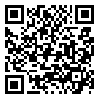BibTeX | RIS | EndNote | Medlars | ProCite | Reference Manager | RefWorks
Send citation to:
URL: http://sjsph.tums.ac.ir/article-1-85-en.html
Background and Aim: Food insecurity implies a limited ability to secure adequate and safe food or limited or uncertain ability to acquire acceptable foods in socially acceptable ways. The nutrition transition in Iran is taking place in the context of rapid demographic change and urbanization in spite of underweight, obesity and overweight increased, especially among women. It is usually expected that food-insecure people have an inadequate food intake, less body fat, and body weight. However, several studies in developed countries have shown a higher prevalence of overweight/obesity among food-insecure household members, especially women. Under weight and overweight or obesity is the most common nutritional disorder in the developed countries and is assuming to become a serious health problem in developing countries. This study aimed to assess the association between food insecurity and socio-economic factors in households and body mass index among urban women in Dezful in 2008.
Materials and Methods: A total of 400 household were randomly selected by two stage sampling from different areas in Dezful. Heights and weights of all women were measured based on standard protocols, and body mass index (BMI) was calculated. BMI status was defined based on cut-off values recommended by NIH( under weight = BMI<18.5, normal weight 18.5< BMI< 25, overweight 25≤BMI<30 and obesity BMI≥30 Women provided detailed demographic and food insecurity information via a face- to- face interview. Information on food insecurity was collected using the instrument originally developed by USDA. All analysis was conducted using the SPSS statistical package.
Results: The prevalence of household food insecurity was %37.6 and 42.8% of the women were overweight, and 12% obese, respectively. Results showed that, BMI was positively associated with food insecurity, women's age and family size and inversely associated with , race and economic status (p <0.05).
Conclusion: It is evident that household food insecurity, overweight and obesity coexist in Dezful. Women age, family size, race and economic status were recognized as associated factors with food insecurity but other factors didn't show significant relationship. There is lack of published information regarding food insecurity and some factors affecting with body weight status therefore, it is necessary to perform such studies in other regions too.
Received: 2010/05/18 | Accepted: 2010/08/17 | Published: 2013/08/9
| Rights and permissions | |
 |
This work is licensed under a Creative Commons Attribution-NonCommercial 4.0 International License. |





